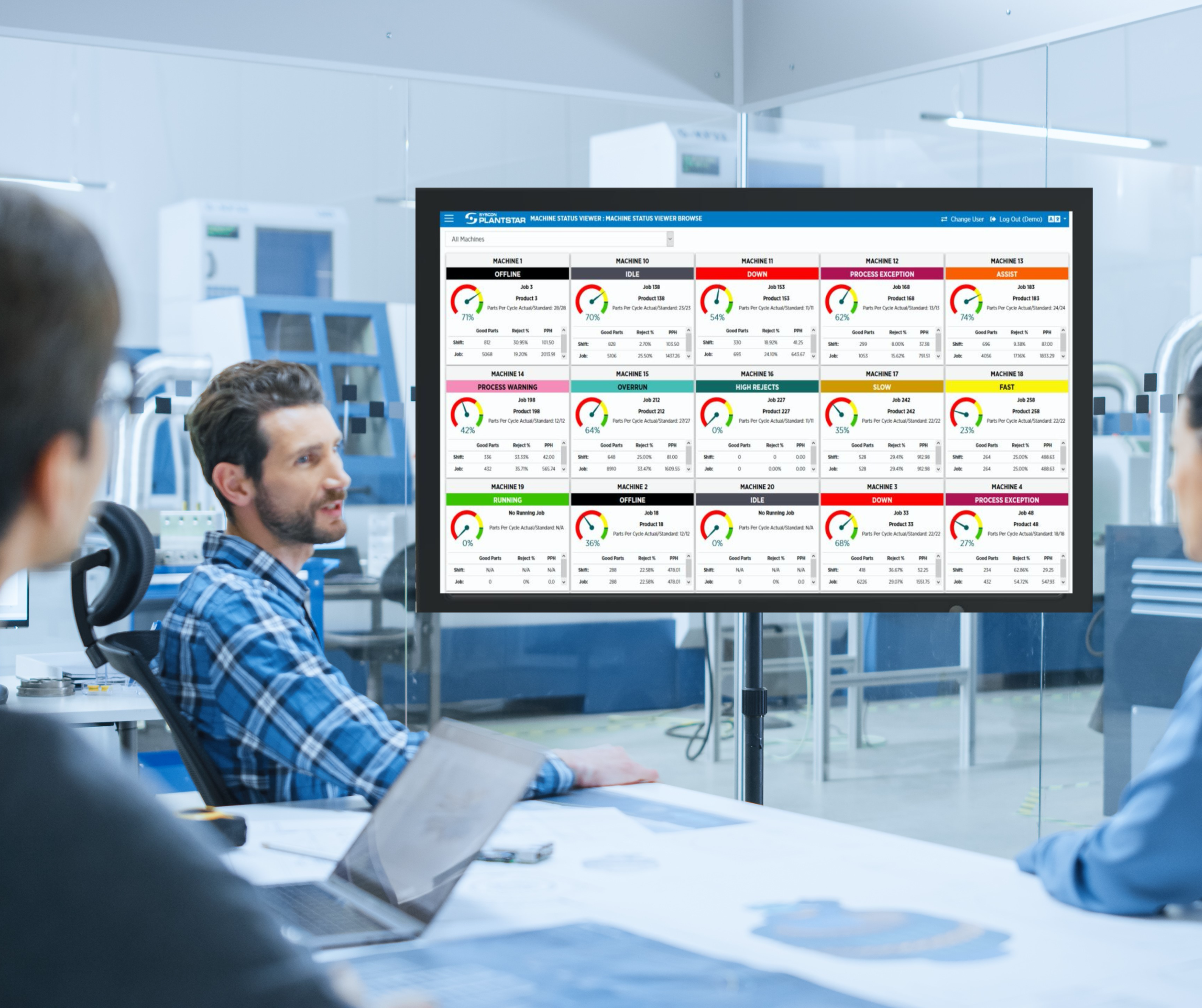PlantStar BLOG
The Top Considerations for Manufacturers Building Remote Operations
Dec 22, 2022 4:41:00 PM / by PlantStar Team

The world seems smaller and more connected every day. Like other industry leaders, manufacturers need to find ways to leverage new technology to improve operations. The latest innovations enable manufacturers to manage their facilities from anywhere in the world. As they embrace these advances and extend operations to remote locations, these changes present pitfalls as well as possibilities.
Manufacturing is in a period of dramatic change. Suppliers face significant personnel shortages. Legacy manufacturing solutions hamstring operations because of their cumbersome input and limited visibility into the process flow. Remote operations have the potential to address these issues.
What are the benefits of remote manufacturing?
Expanded Personnel Pool
Manufacturers face a personnel conundrum. Demand for help had been increasing even before the pandemic. As it took hold, many workers did not feel comfortable working in manufacturing facilities, plants, warehouses, and shipping sites because of the constant human contact. So, they quit. As a result, suppliers have had trouble filling open positions. In fact, 2.4 million manufacturing slots are expected to be unfilled between 2018 and 2028, leaving as much as $2.5 trillion in untapped revenue. Remote manufacturing enables producers to extend their talent search beyond their borders and across the globe.
Visibility into Processes
Traditional application design limited manufacturers, giving employees only limited visibility into the production process. As a result, personnel understood how well a production run functioned only after it was completed. Technical advances such as the cloud, the internet of things (IoT), data analytics, and artificial intelligence and machine learning created new ways to work.
The COVID-19 pandemic spurred adoption of such solutions. Employers were forced to change their processes because of social distancing rules and needed to rapidly enable remote work for their employees. In response, companies accelerated the digitization of their customer, supply-chain, and internal operations by three to four years.
Now that they have the tools in place to support virtual work, many manufacturers are replacing the cumbersome, old, inefficient, hard-to-integrate systems with modern ones that provide real-time information. This lets employees see work in progress. If problems emerge, they can make needed adjustments virtually rather than waiting until the next day to address them.
Flexibility
Flexibility is a key benefit of remote operations. Remote work provides accessibility from anywhere—at home, on the road, in the office, or on the production line—and intuitively, often through a smartphone. This allows managers to safely and securely monitor machine data on the factory floor and control operations virtually. They can turn equipment on or off, change set points, and acknowledge and address alerts.
Lower Costs
Suppliers are under intense competitive pressure, and reducing costs is imperative. In many economically advanced countries, personnel costs are high and have been rising with post-pandemic inflation. Eventually, these costs have to be incorporated into final product pricing.
New attractive manufacturing locations have recently emerged across the globe. In many cases, the national economies in these places are rising at faster rates than those in more established markets, and producers are experiencing less financial pressure. In many cases, governments have been putting new infrastructure in place to support anticipated economic growth. By relocating, manufacturers can enjoy low-priced labor, modern amenities, and often, tax incentives and fewer legal restrictions, making this an attractive option.
Increased Productivity
Plants typically operate during the workday. With remote operations, companies can produce goods 24 hours a day by stationing facilities in different locations around the globe. Consequently, they can produce more items more quickly, improving their productivity.
What Challenges Do Manufacturers Need to Consider?
Reluctance to Embrace Change
People become comfortable with routines, and disruption of any kind can create anxiety. Some managers feel lost without the reassurance of walking the shop floor and seeing all the machines humming away. Manufacturers need to be proactive in acknowledging such feelings and managing the pushback that usually comes with them. They need to open the lines of communication, be transparent about the potential impact on workers, and provide training so employees understand how to complete their work in the new environment. Only then will managers and employees become comfortable with remote work.
Network Security & Reliability
To enable remote monitoring, companies need strong, secure network connections. The network becomes the foundation that supports all the other technologies. As operations expand to remote locations, however, manufacturing networks become more vulnerable to intrusion.
Manufacturers must take steps to protect company information. Two common ways to do this are with a firewall and a virtual private network (VPN). These systems work as checkpoints, examining incoming and outgoing traffic and ensuring only authorized users access manufacturing facility information and equipment.
Digital technology gives suppliers the opportunity to reduce costs, boost productivity, and expand their facilities. For a successful digital transition, companies must account for the resistance to change and need for secure network connections that comes with it. See our website to learn more about remote production and process monitoring and other manufacturing software solutions to update your operation, or subscribe to our blog for regular updates.
Subscribe to Email Updates
Posts by Topic
- Manufacturing Execution Systems (38)
- manufacturing solutions (16)
- MES 101 (13)
- Industry 4.0 (11)
- improve efficiency (10)
- Plastic Molding (9)
- Plastics Technology (9)
- mes software (9)
- mes solutions (9)
- MES hardware (8)
- Shop Floor Production (8)
- digital transformation (7)
- Reduce scrap (6)
- data-driven-decisions (6)
- Medical molding (5)
- lean manufacturing (5)
- process monitoring (5)
- product quality (5)
- lights-out manufacturing (4)
- manufacturing dashboard (4)
- production monitoring (4)
- ERP integration (3)
- Shop Floor Safety (3)
- supply chain management (3)
- Injection Molding Technology (2)
- defect collection (2)
- machine mes (2)
- process variables (2)
- digital strategy (1)
- labor gap (1)
- throughput (1)


